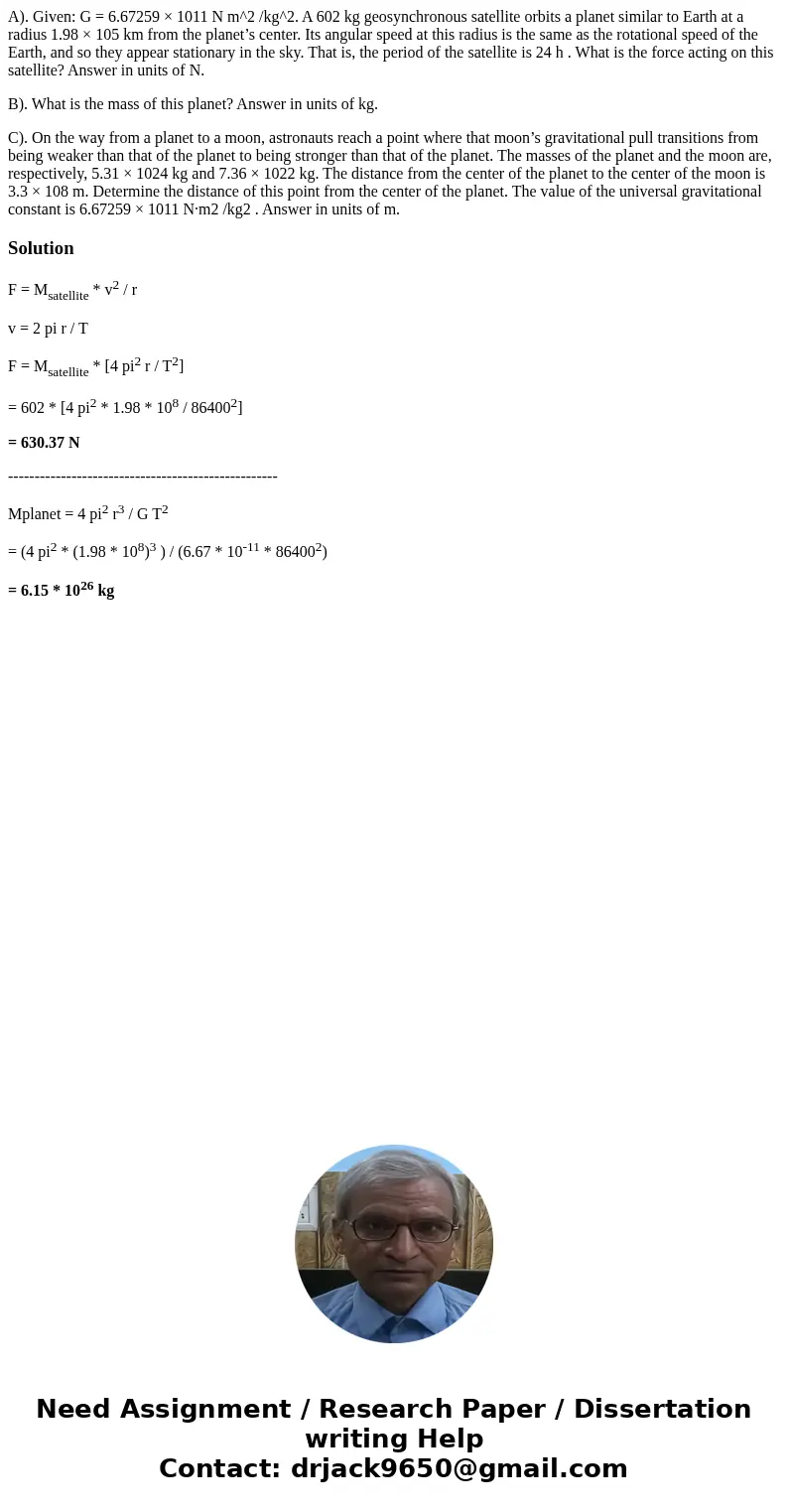A Given G 667259 1011 N m2 kg2 A 602 kg geosynchronous sat
A). Given: G = 6.67259 × 1011 N m^2 /kg^2. A 602 kg geosynchronous satellite orbits a planet similar to Earth at a radius 1.98 × 105 km from the planet’s center. Its angular speed at this radius is the same as the rotational speed of the Earth, and so they appear stationary in the sky. That is, the period of the satellite is 24 h . What is the force acting on this satellite? Answer in units of N.
B). What is the mass of this planet? Answer in units of kg.
C). On the way from a planet to a moon, astronauts reach a point where that moon’s gravitational pull transitions from being weaker than that of the planet to being stronger than that of the planet. The masses of the planet and the moon are, respectively, 5.31 × 1024 kg and 7.36 × 1022 kg. The distance from the center of the planet to the center of the moon is 3.3 × 108 m. Determine the distance of this point from the center of the planet. The value of the universal gravitational constant is 6.67259 × 1011 N·m2 /kg2 . Answer in units of m.
Solution
F = Msatellite * v2 / r
v = 2 pi r / T
F = Msatellite * [4 pi2 r / T2]
= 602 * [4 pi2 * 1.98 * 108 / 864002]
= 630.37 N
---------------------------------------------------
Mplanet = 4 pi2 r3 / G T2
= (4 pi2 * (1.98 * 108)3 ) / (6.67 * 10-11 * 864002)
= 6.15 * 1026 kg

 Homework Sourse
Homework Sourse